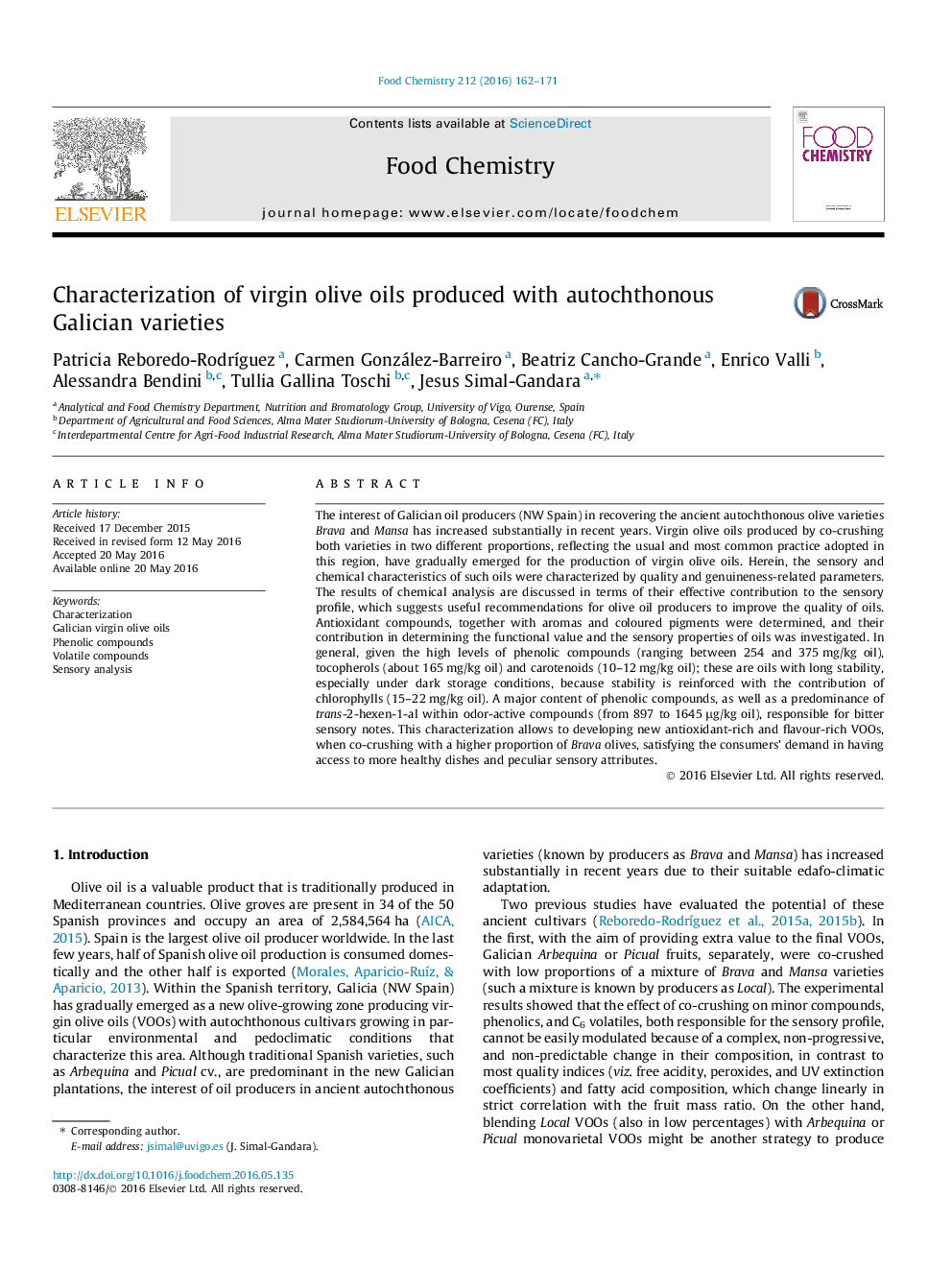| کد مقاله | کد نشریه | سال انتشار | مقاله انگلیسی | نسخه تمام متن |
|---|---|---|---|---|
| 1185036 | 1492080 | 2016 | 10 صفحه PDF | دانلود رایگان |
• Fatty acid composition of the Galician oils was between usual Arbequina and Picual oils.
• Brava olives had a markedly higher content in all relevant C6 compounds.
• Pungent and bitter were the main sensory attributes in oils with a higher percentage of Brava.
• Volatiles from amino acid transformation and acetic acid penalized Mansa virgin oils.
• Useful recommendations for olive oil producers to improve the quality of oils were given.
The interest of Galician oil producers (NW Spain) in recovering the ancient autochthonous olive varieties Brava and Mansa has increased substantially in recent years. Virgin olive oils produced by co-crushing both varieties in two different proportions, reflecting the usual and most common practice adopted in this region, have gradually emerged for the production of virgin olive oils. Herein, the sensory and chemical characteristics of such oils were characterized by quality and genuineness-related parameters. The results of chemical analysis are discussed in terms of their effective contribution to the sensory profile, which suggests useful recommendations for olive oil producers to improve the quality of oils. Antioxidant compounds, together with aromas and coloured pigments were determined, and their contribution in determining the functional value and the sensory properties of oils was investigated. In general, given the high levels of phenolic compounds (ranging between 254 and 375 mg/kg oil), tocopherols (about 165 mg/kg oil) and carotenoids (10–12 mg/kg oil); these are oils with long stability, especially under dark storage conditions, because stability is reinforced with the contribution of chlorophylls (15–22 mg/kg oil). A major content of phenolic compounds, as well as a predominance of trans-2-hexen-1-al within odor-active compounds (from 897 to 1645 μg/kg oil), responsible for bitter sensory notes. This characterization allows to developing new antioxidant-rich and flavour-rich VOOs, when co-crushing with a higher proportion of Brava olives, satisfying the consumers’ demand in having access to more healthy dishes and peculiar sensory attributes.
Journal: Food Chemistry - Volume 212, 1 December 2016, Pages 162–171
